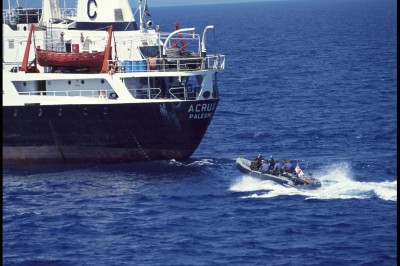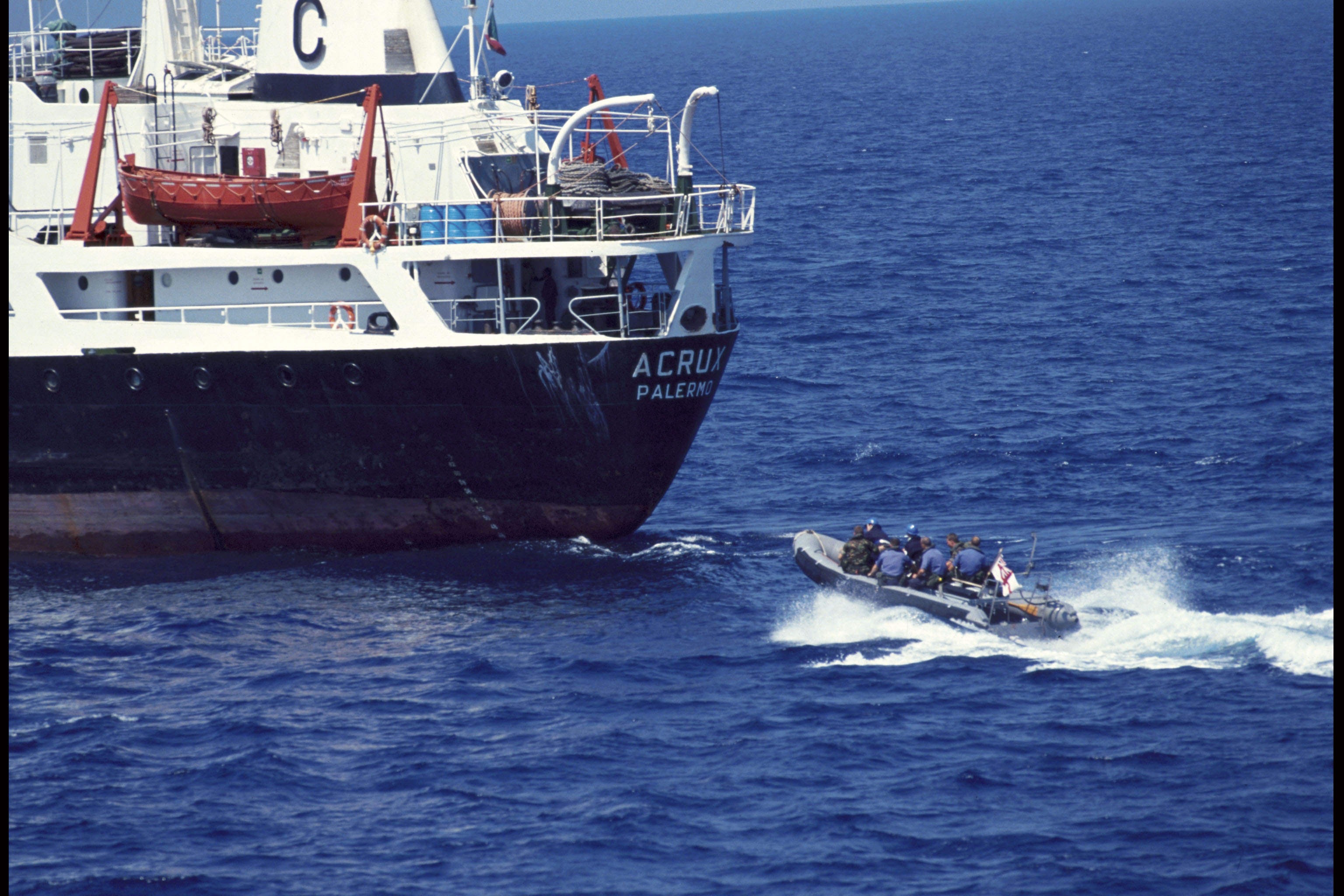When the EU(O) conducted a joint maritime embargo with NATO. An example for today?

Twenty years ago, Europe had no defense policy. And it was the Union for Western Europe that was in charge of these issues. An organization, which probably did not have the consistency of the current European Union but nevertheless carried out several operations. In the early 20s, it ensured first alone, then jointly with NATO, a maritime and air surveillance operation off the coast of the former Yugoslavia to monitor the arms embargo decreed by the United Nations. -United.
Two WEU and NATO solo missions
Meeting in Helsinki on 10 July 1992, the WEU Council of Ministers (*) decides that WEU naval forces will participate in the Adriatic in monitoring the embargo imposed on the former Yugoslavia at the United Nations. It will be operation SHARP VIGILANCE until November 1992 then SHARP FENCE until July 1993. NATO was also conducting its own operation at the time (called MARITIME GUARD). "It was really strange to have two similar operations in the same place with different rules, even dangerous", explains Willem van Eekelen, Dutch Defense Minister, WEU Secretary General until 1994 (interviewed in 2009 by the CVCE).
A single joint WEU-NATO mission
On 8 June 1993, the WEU and NATO Councils approved, under cover of United Nations Security Council resolution 820, the concept of a joint operation by setting up a single command for the operation "SHARP GUARD", scheduled to begin on June 15, 1993. It lasts three years and ends on June 15, 1996. It aims to control the arms embargo at sea and prevent unauthorized vessels from entering the territorial waters of Serbia-Montenegro. It is accompanied by aerial surveillance.
A common command was set up, under the direction of an Italian Admiral, Carlo Alberto Vandini (Commander in Chief of NATO forces in Naples). The CTF 440 then had around twenty ships, from around ten countries (France, Germany, Netherlands, Spain, Greece, United Kingdom, USA, Canada, Turkey, Norway).
Review of
During this operation, WEU is deploying four ships and half a dozen maritime patrol and early warning aircraft (Awacs). On the French side, several ships were successively engaged: the frigate Georges Leygues (2), the aviso Destroyat or the aviso Drogou. A small WEU staff element provided control of one of the joint naval groups while another was attached to COMNAVSOUTH HQ in Naples. In total, some 74.000 arrests were carried out, nearly 6 buildings were inspected at sea and more than 000 diverted and inspected in port. Six were intercepted attempting to breach the embargo.
(1) Nine then 9 (with Greece) of the 10 Member States of the European Community (the EEC except Denmark and Ireland) are members of WEU.

